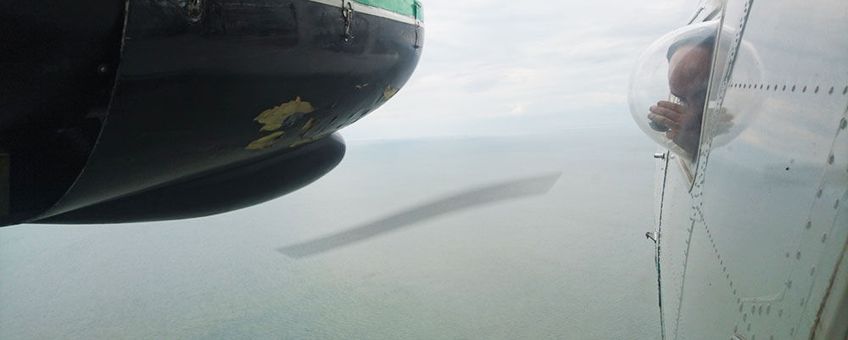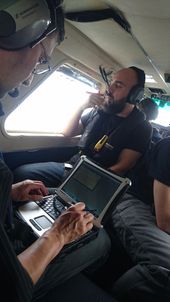
Flight preparations for large-scale survey of cetaceans
Wageningen Marine ResearchCetacean survey with ships and airplanes
The first SCANS survey was conducted in 1994 and the second in 2005. The results of SCANSIII are urgently needed to feed into the management and conservation of cetaceans such as the Harbour Porpoise. These animals can be highly impacted by human activities in our oceans, such as noise production or pollution.
 The study area ranges from Norway to Portugal, and extends to the waters west of Scotland. The survey work will be conducted using three boats and seven airplanes, all staffed with experienced cetacean observers, over a period of 30 days.
The study area ranges from Norway to Portugal, and extends to the waters west of Scotland. The survey work will be conducted using three boats and seven airplanes, all staffed with experienced cetacean observers, over a period of 30 days.
Aerial surveys in planes with special windows
The aerial component of the surveys is being coordinated by IMARES and will include the deployment of seven planes. Each plane will consist of a team of three experienced cetacean observers. Two observers will be situated at so-called bubble windows, allowing them an unobstructed view of the sea below them. The third observer will continuously enter all data collected into a so-called toughbook computer.
Preparations and test flights
In Le Touquet, the cruise leaders of the seven survey planes are together to discuss, test and standardize the equipment and methodology to be used. The test flights were successfully completed, using a Brittan Norman plane (from Pixair) which allowed two teams to work in parallel. The results of the flights will feed into the final protocol for data collection so that on 27th June all seven planes with their survey teams can officially take off to conduct SCANSIII.
Text: IMARES Wageningen UR
Photos: Meike Scheidat (leadphoto: the airplane has bubble windows, allowing an unobstructed view of the sea below)
